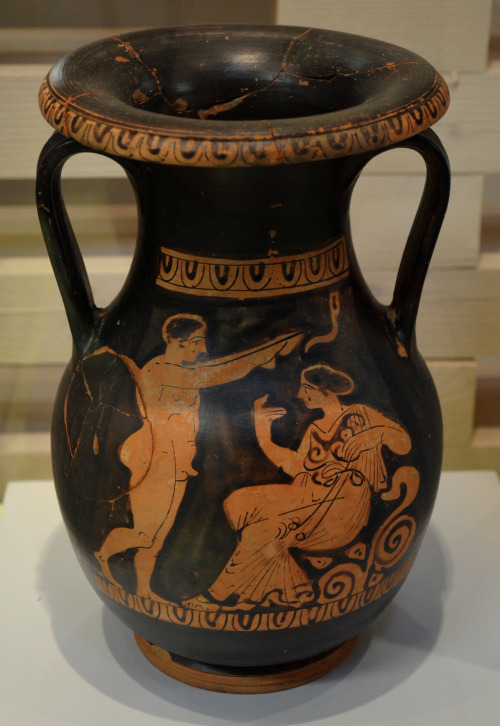greek-museums:Museum of the Roman Forum (Thessaloniki):From the temporary exhibition “…young and in
greek-museums:Museum of the Roman Forum (Thessaloniki):From the temporary exhibition “…young and in excellent health” Aspects of youths’ life in Ancient MacedoniaA pelike with a depiction of an athlete, found in Chalkidike, from the Lambropoulos collection (350 B.C). A lekythos with a musician holding a barbitos and a cane, by the Berlin painter*. Found in Ancient Aphytis (480-460 B.C). A krater with a scene from a symposium- with a male auletes. Found in Ancient Akanthos (375 B.C).You might have noticed that the painters’ names for a lot of these vessels are not known. From time to time however, it is possible to identify a group of vessels that have been painted by the same artist, or workshop. Since the painter’s name is not known an alias is used. A lot of these aliases reflect the provenance of the vessels- such as the painter of Eretria, or the painter of the Agora.However, a group of foreign aliases such as the painter of Berlin, or the Hirschfeld workshop, or the Kerch type stand in for foreign scholars and museums that owned and studied the vessels at the time. Though to many it might seem that this sort of name-giving is just a practicality, the practice of tying greek artifacts with foreign institutions and researchers is a very aggressive form of claiming the permanent ownership of these objects.But why is this bad? It’s just a few vases after all, right? -- source link
Tumblr Blog : greek-museums.tumblr.com


